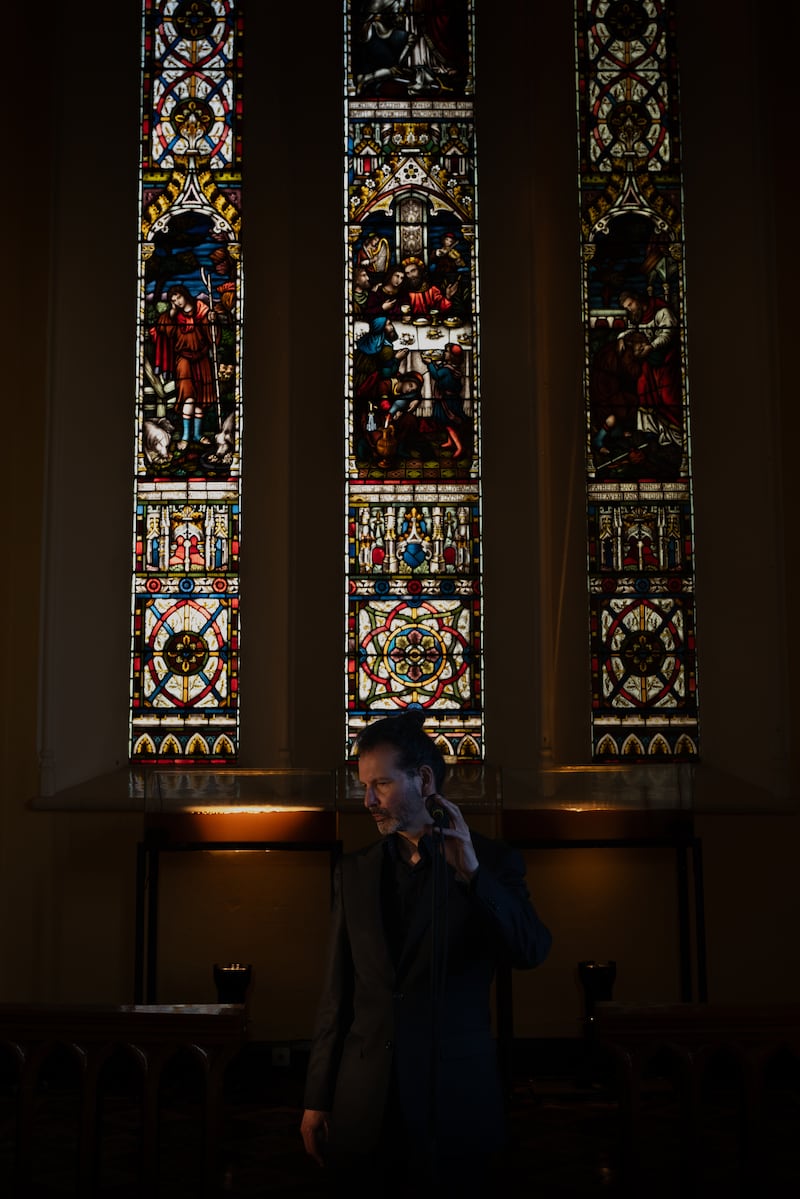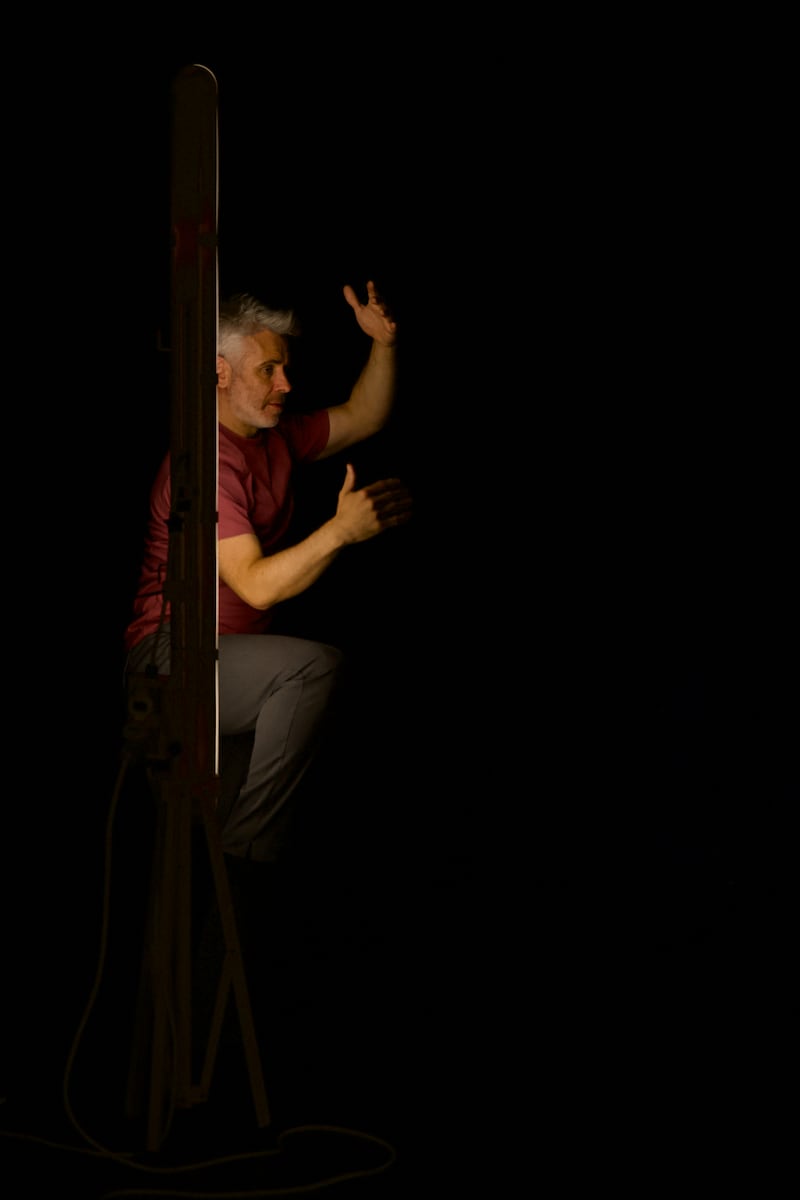Anything to Declare
Swanlinbar, Co Cavan
★★★★☆
Approaching Swanlinbar, in Co Cavan, from the North, drivers have recently passed a large red neon sign in a field, just as they have crossed the Border, stating Anything to Declare. It is part of an impressive multifaceted arts project by Dylan Quinn Dance Theatre, from Enniskillen, that offers no fixed viewpoint but presents four different artistic impressions of the Border. All take place throughout Swanlinbar, so the artistic ideas are never abstract but always rooted in place and people.
First, the audience is guided around the village to view Róisín Loughrey’s A Line That Birds Cannot See, a series of short video loops on 21 screens placed in locations such as a shop window, the GAA club changing room, the modern St Mary’s Church, an alleyway and an old schoolhouse.
On two of the screens the film-maker notes the historical birth of the Border with early footage of it alongside images of Michael Collins and Arthur Griffith. But images from nature are predominant, highlighting commonality rather than division. Two close-up clips of dancers clasping hands draw attention to common humanity and interconnected communities across divides.

Nature can create borders too. In Lung, the composer Andy Garbi was drawn to the Cladagh river, which sometimes serves as a border between Cavan and Fermanagh. His soundscape, presented in surround sound at St Augustine’s Church, is drawn to the river’s source. This is not a trickling spring in a field but the booming resonance of the Marble Arch Caves.
Paschal Donohoe’s worst sin: being ‘a wee bit scabby on nights out’
First look: Hoxton Hotel brings back Dublin’s Library Bar and a new iteration of Rí-Rá
Clodagh McKenna: ‘I don’t have the budget for caterers – I’m not in that league’
Joanne McNally: ‘I was like, I’ll absolutely fly to Ireland and play golf with Bill Murray’
This breadth of sound is supplemented visually with glass tanks of Cladagh water at the side and back, lit from beneath and spreading dancing yellow light on the walls. Later Garbi layers poems on top of the music with words that geotag the path of the river.
The Cladagh’s constant flowing water might have carved out a natural border, but imposed borders are more problematic, suggests Rose Connelly’s Persistent Shadow, which is presented in a tiny black-screened area in the old Methodist church. Beginning with long sung notes of soft vowels that slowly dip in pitch, the space becomes overpowered by the harsh consonants of looping snippets of historic speeches and proclamations of conflict by some well-known voices from the Troubles. As the sounds are projected through four speakers, the freely moving audience gain different perspectives depending on their proximity to any one loudspeaker.

Finally, moving to the community centre, Dylan Quinn’s dance solo Wounded shows how the dark history of the Border can be embodied. Performed to the amplified sound of his heartbeat, the dance is viewed by the audience seated in lines on opposite sides, suggesting a physical border and the duality of viewpoints.
Gazing into the distance past an outstretched arm, he looks past division, but later his violent shuddering suggests the underlying political trauma. Towards the end, short movements come together in a looping sequence, mostly looking forward but occasionally glancing backwards.
Experiences are embodied, but, like second-hand smoke, so too is history.











